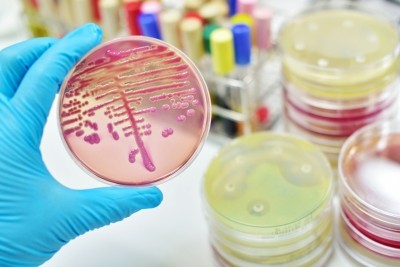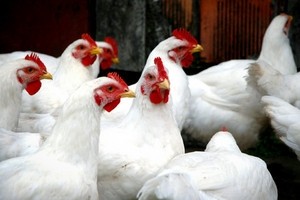Findings may support reduction in copper content levels in EU feed but report incomplete: expert
Low copper quantities inhibit coliform bacteria in pigs: review

Bent Borg Jensen, senior researcher in the Department of Animal Science at Denmark’s Aarhus University, in a review commissioned by the European Food Safety Authority (EFSA), found the population of clostridia and coliform bacteria in piglets seems to be affected by low copper concentrations and, in particular, by copper bound clay minerals.
"It may be concluded from the experiments that supplementing piglet (and growing pigs) diet with low additional copper amounts, below 50 mg/kg Cu, seems to inhibit the population of coliform bacteria in the gastrointestinal tract (GIT)," noted the report.
When supplemented to the feed in amounts above 100 mg/kg feed, copper does not seem to have any effect on the population of coliform bacteria in pigs. Jensen also found feeding the mineral to piglets and growing pigs at concentrations of 170mg/kg of feed reduces the population of lactobacilli in their gastrointestinal tract.
His report, which also weighed up the potential impact of copper on dairy cows, will inform the assessment of a working group (WG) of the Authority’s FEEDAP panel in relation to the mandate: Revision of Maximum Content of Copper in Feed.
The Parma-based risk assessor wants to determine the relationship between levels of dietary copper in animals and differences in their gastrointestinal microbiota as it assesses whether there is a need to amend the levels of the mineral authorized for use in feed. Piglet diets currently have the highest copper (Cu) supplementation allowance in the EU.
Copper levels in feed set to fall?
Francesc Molist, head of the swine research group at Schothorst Research Center in the Netherlands, reacting to the findings on pigs, told FeedNavigator:
“According to the report, 50 ppm Cu is enough to reduce the counts of coliforms and clostridia bacteria in piglets. Lactobacilli are affected at greater doses. From this it could be concluded that the current 170 ppm [maximum copper content level currently allowed in piglet feed in the EU] could be reduced.
“However, I don’t see any mention of microbiota and other parameters such as growth performance or diarrhea in the report. In practice Cu is also used as a growth promoter in piglets. So, reducing Cu levels in feed might results in lower growth of piglets.
"I also don’t see a reference to the interaction between Cu and other compounds in the diet such as Zn or phytate, which most likely also affect the microbiota composition.
“Moreover, the relationship between Cu and the age of piglets [is not explored either]. The tendency [in the EU today] is to wean piglets at around 26 days, whereas in most of the trials reviewed [in the literature review] the weaning age was closer to 21 days.”
Broilers and dairy cows
Jensen also noted the population of clostridia in the GIT of broilers seems to be affected by low concentrations of copper.
And he found inorganic or organic bound copper, at a dosage level of around 200 mg/kg feed, impacts the population of lactobacilli and coliform bacteria in the birds, and thereby reduces the pH in gizzard content and causes severe gizzard erosion.
Of the 114 references found for dairy cows in Jensen's literature search, five were in the first phase considered appropriate to be included. However, a closer examination of the five studies revealed the papers not to be suitable, said EFSA.
Antibiotic resistance analysis
Meanwhile, in April, FEFANA questioned the conclusion of a systematic literature review (SLR) by Belgian academics that did not rule out a correlation between copper additives and antibiotic resistance in pigs.
Researchers at Ghent University carried out the analysis, made public last month, again on behalf of EFSA, which requested such scientific assistance as it drafts its opinion on copper content in feed.
The regulatory managers at the EU Association of Specialty Feed Ingredients and their Mixtures (FEFANA) said while the academics involved had certainly indicated important elements for hazard identification, they had grave concerns about the ultimate findings of the SLR:
“The recommendation given is considered premature and disproportionate at this stage considering the very limited scientific evidence and the absence of a clear hazard characterization.
"The SRL does not allow a conclusion [to be drawn] on the impact of increasing levels of Cu in the diet of piglets and increased resistance to antibiotics even if some high levels of copper seems to increase specific resistance. The question remains: up to which level using Cu in the diet of piglet will not induce resistance?
"More research in this field is necessary and guidance on the methodology for generating and collecting those new data are welcome,” said the FEFANA team in April.
The Authority’s deliberations on the maximum levels of copper in the diets of farmed animals are expected to be finalized in July this year.













